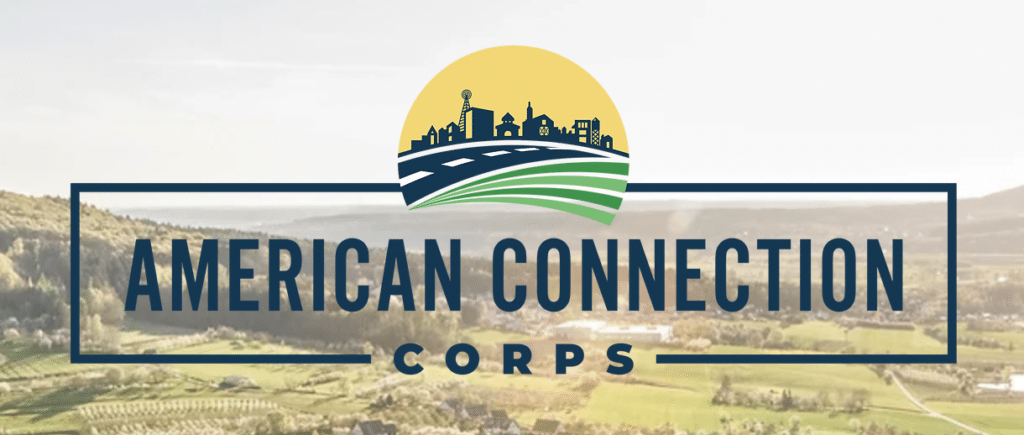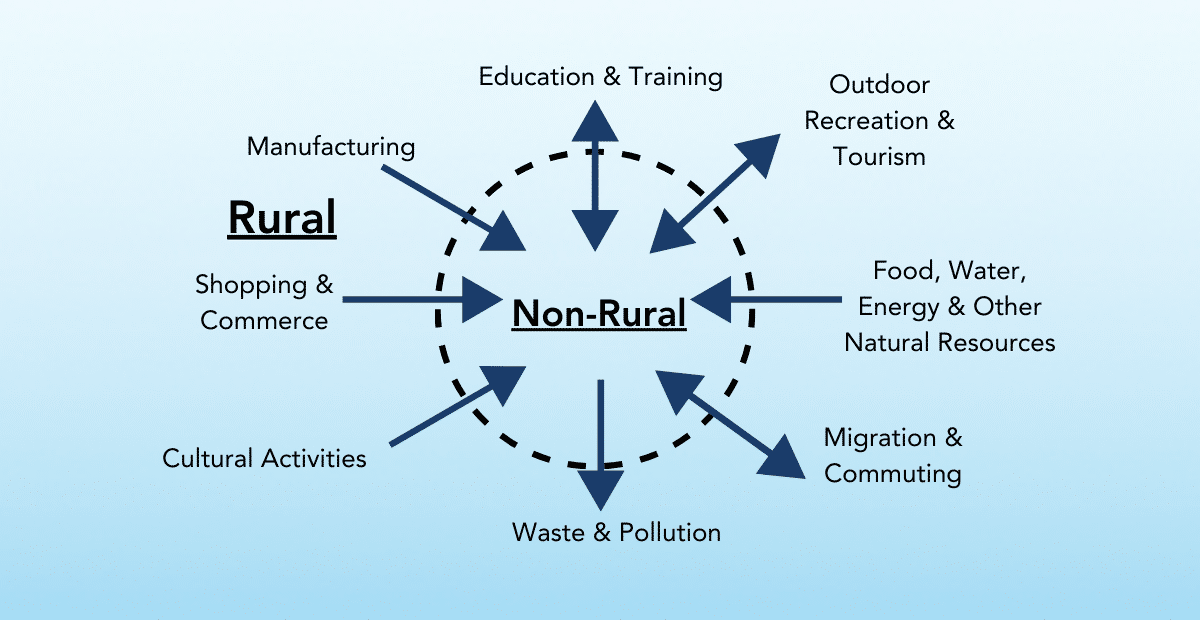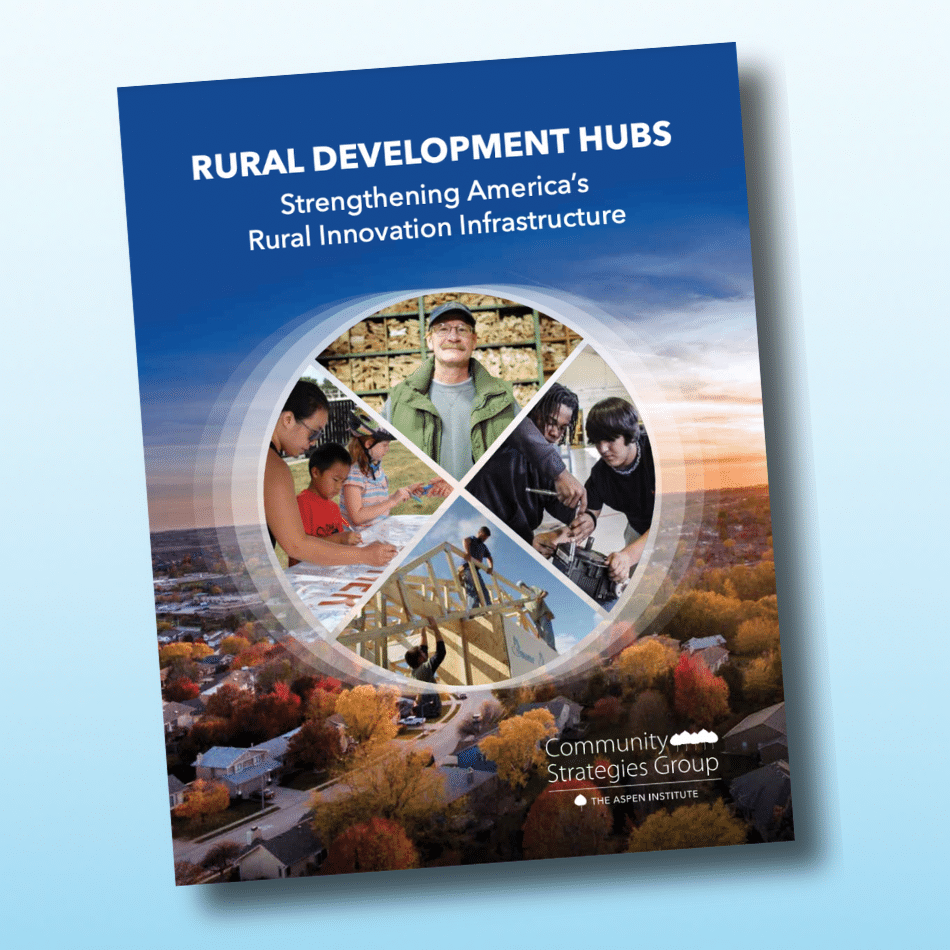Rural communities and Native nations around the country have been denied access to broadband, which impacts community members’ opportunities for education, healthcare, public benefits, online banking, remote work, and other resources. Broadband services are wildly available in population-dense, urban areas, but rural communities have been long neglected by service providers.
The Thrive Rural Framework’s Fundamental Element of place, race, and class equity identifies the primary ways rural people and places are historically and currently disadvantaged. These key discriminative factors are relevant to the issue of rural internet access, as studies show that rural residents who do not have broadband access are more likely to be low-income and live in BIPOC households. To help counteract this discrimination, it is imperative that rural and Native communities have broadband and are able to access essential resources.
Many governmental and nongovernmental organizations have funding and educational resources for communities to help them build the infrastructure necessary for high-speed internet.
This is a regularly updated collection of resources for funding, advocacy, and community program opportunities for rural community leaders to help bring broadband to their communities.
Funding
- The ReConnect Loan and Grant Program furnishes loans and grants to provide funds for the costs of construction, improvement, or acquisition of facilities and equipment needed to provide broadband service in eligible rural areas.
- Community Connect Program provides financial assistance in the form of grants to eligible applicants that will provide, on a “community-oriented connectivity” basis, broadband service that fosters economic growth and delivers enhanced educational, health care, and public safety benefits.
- The Broadband Technical Assistance program provides financial assistance through cooperative agreements to eligible entities to receive or deliver broadband technical assistance and training and supports the development and expansion of broadband cooperatives.
- Each year, the Appalachian Regional Commission provides funding for several hundred investments in the Appalachian Region in areas such as business development, education and job training, infrastructure (including broadband), community development, and transportation. These projects create thousands of new jobs, improve local water and sewer systems, increase school readiness, assist local communities with strategic planning, and provide technical and managerial assistance to emerging businesses.
- This USDA Telecommunications Infrastructure Loans & Loan Guarantees program provides financing for the construction, maintenance, improvement, and expansion of telephone service and broadband in rural areas.
- The Delta Regional Authority’s States’ Economic Development Assistance Program provides direct investments for basic public infrastructure, transportation infrastructure, and business development with an emphasis on entrepreneurship and workforce development.
- The FCC’s Affordable Connectivity Outreach Grant Program provides eligible governmental and non-governmental entities with the funding and resources needed to increase awareness of and participation in the ACP among those eligible households most in need of affordable connectivity.
- The Tribal Broadband Connectivity Program is a $3 billion program directed to tribal governments. It will be used for broadband deployment on tribal lands, telehealth, distance learning, broadband affordability, and digital inclusion.
- The Border-to-Border Broadband Development Grant Program was created in 2014 to provide financial resources that help make the business case for new and existing providers to invest in building broadband infrastructure in unserved and underserved areas of the state.
Advocacy
- The Blandin on Broadband (BoB) blog has covered rural Minnesota’s broadband journey since 2007. It covers policy activities and milestones, as well as work local leaders in rural Minnesota communities are doing to bring reliable, affordable high-speed internet to their places and encourage new ways to use broadband in those places. Don’t miss their summary of the impacts of over 20 years of broadband work.
- The US Climate Policy Resource Center breaks down climate policy and investments in the Inflation Reduction Act and Bipartisan Infrastructure Law to facilitate federal, state, and local implementation and support uptake by both the public and private sectors.
- This National Broadband Resource Hub webinar covers the latest on the broadband mapping challenge process, best practices and tips on collecting broadband survey data, and hot-button data topics.
- This American Progress column focuses on the disparities in rural internet access to online resources between rural and urban areas during the pandemic, what the disparities mean for rural Americans’ ability to obtain services that meet their basic needs, and why broadband is a part of the country’s essential infrastructure.
- ChangeLab Solutions writes about the digital divide, the connection between broadband and rural prosperity, and the various barriers rural communities face when trying to get broadband access.
- Public Knowledge’s Shanelle Joyner writes about how the FCC’s national broadband map disadvantages Americans without internet access and how accurate maps are critical to reaching equitable broadband coverage.
- Aspen Digital’s list of dedicated, non-profit organizations that are accelerating digital equity for their communities.
- The first report of the Brookings Institutions’ Rural Broadband Equity Project details how the federal government can contribute to closing the rural broadband divide.
- This Brookings policy brief offers analysis and recommendations to policymakers, internet service providers (ISPs or providers), and practitioners to enable authentic community engagement and increase the likelihood of successfully delivering broadband to rural communities across rural America.
- USDA’s Case for Rural Broadband estimates the possible economic benefits of expanding e-connectivity to rural and agricultural areas.
- USDA Rural Development Innovation Center’s Broadband Guide and collection of broadband resources.
- NTCA Broadband Infrastructure Playbook – Guide for implementing various broadband assistance programs.
- The Daily Yonder discusses how the lack of infrastructure and rural internet access hurts voter participation in rural areas.
- A Pew Trust report details how eight states are using line extension programs to connect unserved residents to broadband.
- Center on Rural Innovation’s Broadband Climate Risk Mitigation Tool is a web application designed to help communities and organizations make informed decisions about broadband deployment while considering natural hazard risks.
In the News
- Toptana Technologies is a first-of-its-kind Indigenous-owned Internet infrastructure and technology company focused on bringing connectivity to unserved and underserved communities. It is owned and operated by the Quinault Indian Nation, which allows the tribe to prioritize needy areas and ensure the highest return on investment in providing improved services to tribal citizens and bringing equity to things like education, health care, and jobs.
Community Program Opportunities

Through yearlong training and support, ACC members are equipped with the tools to understand how they can channel resources locally while also building capacity across a diverse set of host institutions and issue areas to ensure that the opportunity that broadband access facilitates can be fully realized. Lead for America is seeking ACC host sites for the 2024-25 Program Year, which will begin in August 2024

Rural Broadband Association membership includes resources and benefits that will propel your business and employees to the next level of success. Whether you need insurance and benefits, HR services, board training, and development, or connections to partner solutions, NTCA’s Business Solutions guide you to make the most of your NTCA membership.

The Pew Charitable Trusts’ Broadband Education and Training Initiative provides no-cost support to help states make the most of historic increases in state and federal funding. The resources and guidance collected will help states identify and adopt evidence-based strategies to effectively administer federal funds, accelerating the nation’s progress toward universal, affordable broadband connectivity.











